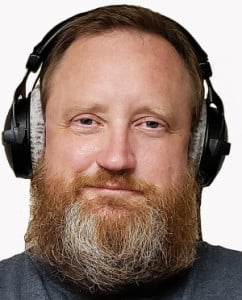Podcast Demo
Description
Vocal Characteristics
Language
EnglishVoice Age
Middle Aged (35-54)Accents
North American (General)Transcript
Note: Transcripts are generated using speech recognition software and may contain errors.
So it's a new year on and in the new year, maybe you're starting a podcast. Or maybe you've decided that you want to up your game and make your podcast sound better. Why? Let's sound quality get in the way of excellent content. That's my question. In the last episode I told you about using audio compression to keep your levels more consistent across your podcast. And this time we're gonna cover tomb or important effects that can improve the overall sound of your episodes, normalization and limiting. Still to come in this Siri's probably one more episode in the series. I'm going to take a look at equalization, sometimes called e que a noise reduction and then putting the whole thing together for a great sounding podcast. Let's look at normalization. Let me start by saying that normalization is pretty darn straightforward, except that it's not in the world of audio. The term normalization may mean two things peak normalization or loudness, normalisation, loudness. Normalisation is an important topic, but we're gonna need to save that for another episode. Peak normalization is what we're gonna focus on here today. What is peak normalization? In the last episode, I talked about compression. Compression is reducing the dynamic range between your loudest sounds and quietest sounds. Peak normalization looks for the highest signal level the peak in the recording and adjust the overall gain so that the highest level is set to a level you determine. That is usually something close to zero DB or zero decibels, but kind of depends on exactly what you're doing. But let me pause. What is a DB or a decibel? Well, they're the same thing. DB is short for decibel, for our purposes. It is used as a unit of measurement for the intensity of sound. It's what we're talking about when we're talking about levels.
